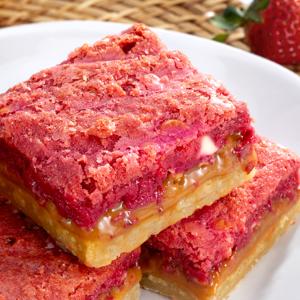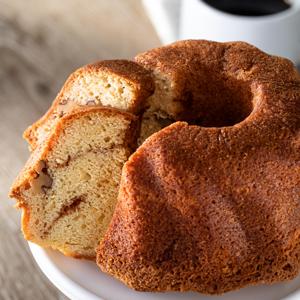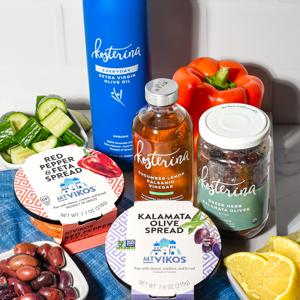
Making Sense of Balsamic Vinegar

- POSTED Sep 30th, 2021
- BY Calvin Mayne
There are many areas in the store where lots of variety is fun: chocolate bars, cheeses, and craft beers come to mind. Sometimes, however, too many choices can be positively confounding. Balsamic vinegar, I think, is an example of the latter, with varying price points ranging from a few dollars a bottle to well over one hundred. You may wonder, “How much money should I spend?” “How many years should the vinegar be aged?” Then you have to navigate Italian terms such as “tradizionale” and “aceto”…mamma mia! Not to worry. Once you make some sense of it all, a little knowledge equips you to buy the right balsamic and the ticket to enjoying one of world’s great condiments. It’s health giving. It’s flavorful. And it’s a part of every well-stocked pantry. When it comes to classifying balsamic vinegar, you can think in three general categories: at the top end you have tradizionale, at the bottom end commerciale, and then there’s a huge middle ground with blends of varying degrees of the first two.

TRADIZIONALE AT THE TOP
Let’s start with the top, Aceto Balsamico Tradizionale di Modena. Aceto Balsamico Tradizionale* is Italian for Traditional Balsamic Vinegar. Now then, why would you ever spend over $100 for a few ounces for any condiment? Indeed, why is it so expensive? For one reason, you could say, you are buying a little slice of history when you buy a bottle. Let me briefly describe how it’s made. The grapes, usually trebbiano, are harvested then crushed into juice called “must,” and put into vats. At the first signs of fermentation, the must is filtered and then boiled in copper pots until its volume is reduced by about 50%. This concentrated sugary liquid is put into large wooden barrels to begin its fermentation. A small amount of “mother vinegar” is introduced and its yeast aids in turning must into vinegar instead of wine.
After a couple of years aging in large wine barrels, the vinegar is now ready for aging in a battery of five handcrafted wooden casks of descending s. The types of wood used in the five barrels may vary as well, contributing different characteristics to the vinegar. A producer may, for example, use chestnut for color, juniper for aroma, cherry wood for sweetness, etc. Barrel filling takes place in the winter since the cold weather causes slow alcohol fermentation; thus, the brew is allowed to settle which clarifies the vinegar. In turn, the hot summer months contribute to evaporation and concentration of the vinegar. Once a year, they top off the casks to 4/5 full by replenishing the smallest cask with liquid from the second smallest, the second smallest with liquid from the next largest…and so on, down the line. Only the largest cask of the five casks is replenished with liquid that has been outside the series of five.
After a minimum of 12 years of aging, a small amount is drawn off of the smallest barrel for bottling. To receive the tradizionale designation, the vinegar has to undergo rigorous production examinations, and finally pass blind-taste testing by master tasters of the official consortium, ie cooperative. If the vinegar fulfills all the requirements, the consortium (not the producer) bottles and seals it. Additionally, if the vinegar is aged 25 years and passes all the tests, it can be labeled as extra vecchio (extra-old). You can see why tradizionale is so costly when you see how the producer has invested so much money, not to mention many years nurturing it to maturity.

COMMERCIALE BALSAMIC
If you just get to the first stage described above, you essentially have the entry level balsamic, at least with the best producers. (On the other hand, beware of some cheap vinegars that contain added coloring and flavor.) Our producer, the respected Manicardi family of Modena, does things the right way for their entry level vinegar. That is, they use only cooked must that has been aged for 2 years in wooden barrels. We’ve offered this very product for many years now under our own label as Aunt Angie’s Balsamic Vinegar of Modena. We named it after my Dad’s oldest sister, whose father Frank emigrated from Italy. Aunt Angie was always proud of her Italian heritage, so we named this vinegar in her honor. Although we have a couple of other lower priced balsamics on our shelves, our Aunt Angie’s is by far the best we offer in this category.

DLM AGED BALSAMIC VINEGAR OF MODENA
Having defined the top end and entry levels, there are a myriad of possible blends in between. When you mix some of the vinegar from the five cask sets and some of the vinegar from the larger wine barrels, you get some of the best qualities of the top tier and entry levels. Specifically, vinegars in this range can have more viscosity and complexity similar to the tradizionale but for less money. As you can imagine, you find enormous variety in this middle range, depending on the percentages used in the blend, the producer’s palate and many other variables. In this category, prices can range from around $20 to up around $60 and more.
A couple years ago, several of us took a trip to Europe to visit suppliers and Modena was one of our stops. We spent an afternoon with Maria Livia Manicardi touring her family’s estate where they produce their wonderful balsamic vinegars ranging from their Aceto Balsamico Tradizionale di Modena to our own Aunt Angie’s Balsamic Vinegar of Modena. One of our goals was to taste various blends with the goal of bottling a mid-range blend that we could be proud to put our name on.
Comments
Leave a Reply
-
ONLINE SHOP
(866) 748-1391 shop@dorothylane.com -
Oakwood
(937) 299-3561- Mon - Sun: 6:00AM - 10:00PM
-
Washington Square
(937) 434-1294- Mon - Sun: 6:00AM - 9:00PM
-
Springboro
(937) 748-6800- Mon - Sun: 6:00AM - 9:00PM
-
COMING SOON: MASON
Craving More?
We'd love to fill your plate with recipes, stories of our food adventures, gift ideas, and news of sale items.
SIGN UP FOR OUR E-NEWSLETTERS





